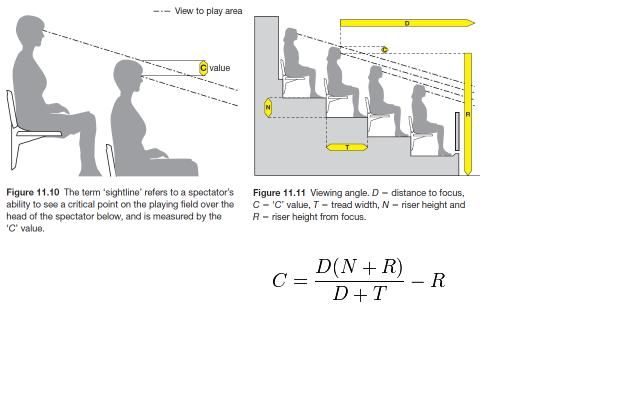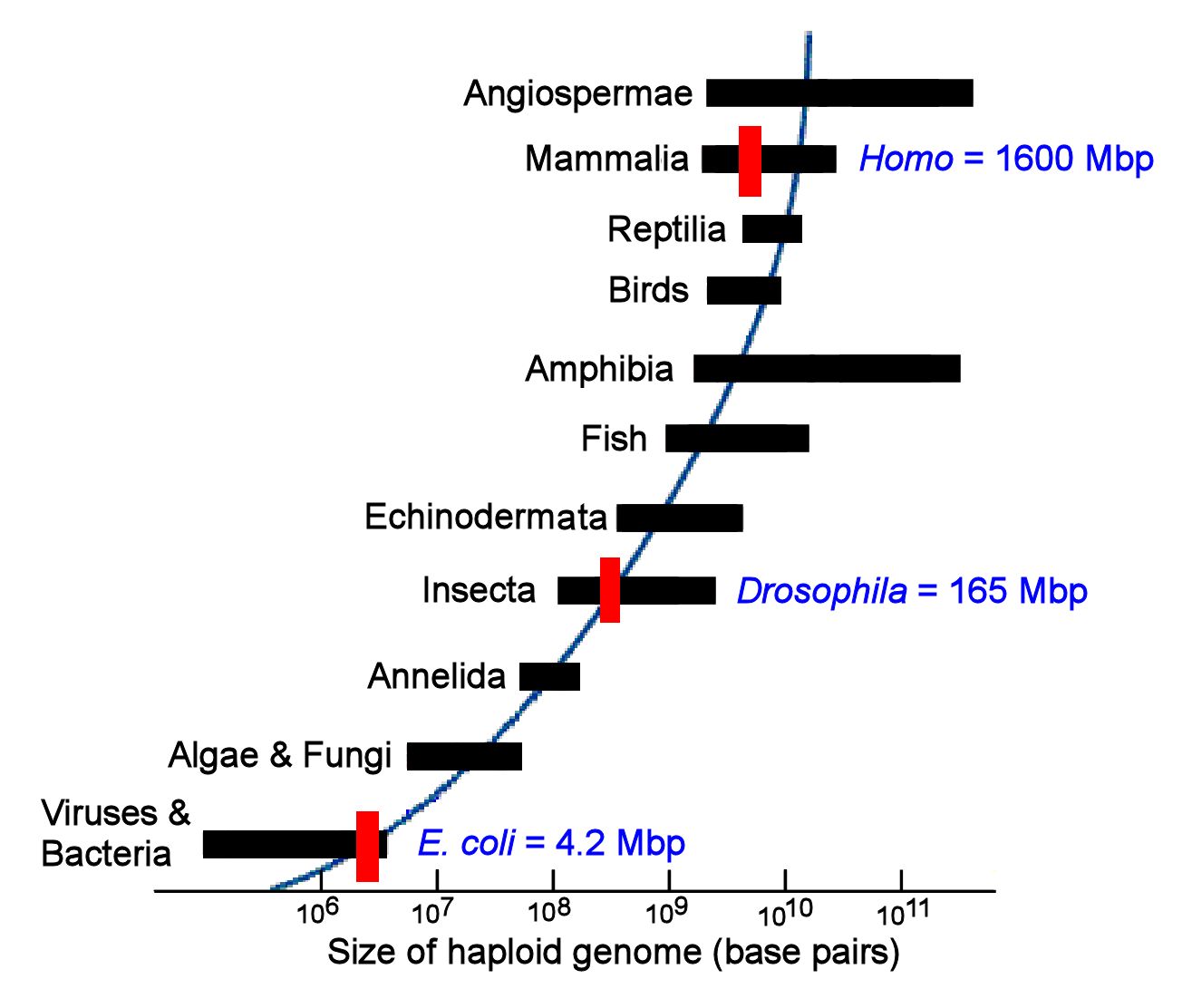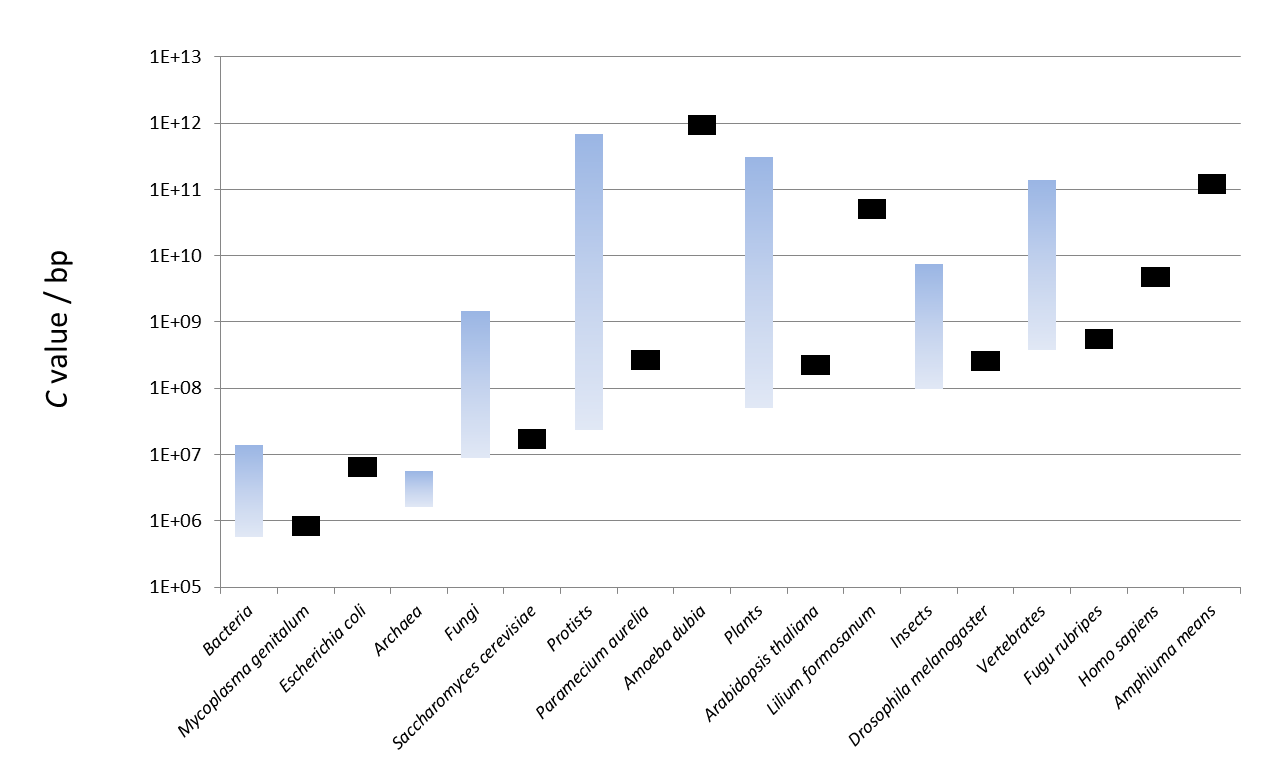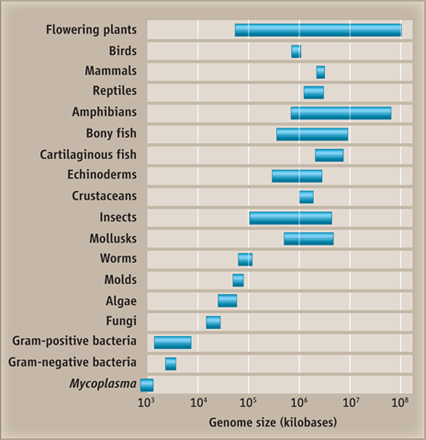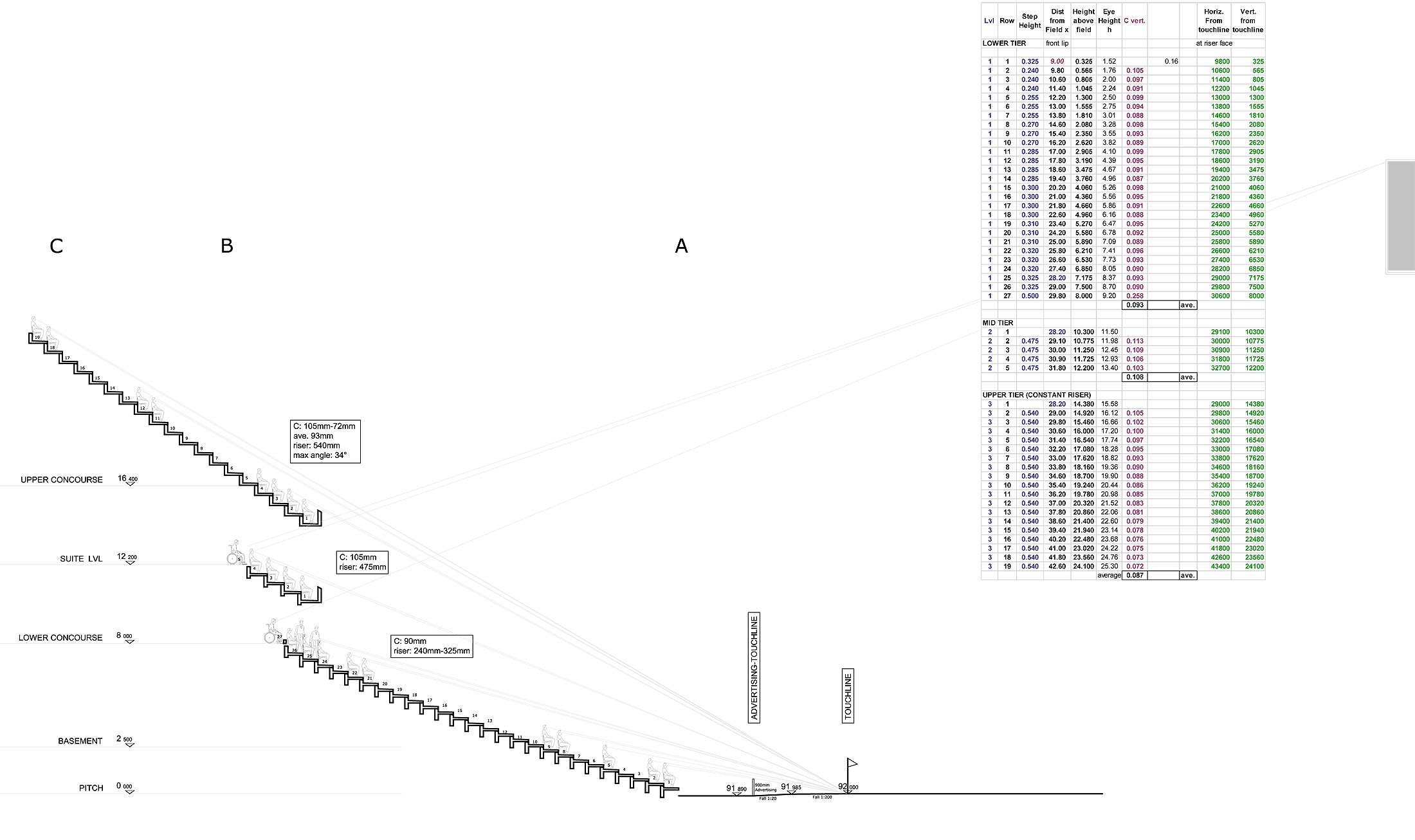C-value
The C- value is in genetics, which deoxyribonucleic acid - set contains a haploid cell or a haploid genome of a living being. There are two definitions differ by the measure of the amount of DNA:
- The mass of deoxyribonucleic acid contained in the haploid set of chromosomes (DNA ) expressed in picograms (pg)
- The number of contained in the haploid set of chromosomes Deoxyribonucleic acid - base pairs.
The C value is substantially stable within a Lebewesenart and therefore a species-specific trait. However, it can be very different between species. Values range from 106 base pairs ( 0.001 Mbp ) for Mycoplasma to 1011 (100 Mbp ) in some plants and amphibians. When making comparisons, it was found that more complex organisms usually have a higher C value. But there are exceptions, it is referred to as C -value paradox.
In addition, the C- value is used to compare the DNA content in the various cells of an organism ( or species ). Then, the relative DNA content of the cells is expressed as a multiple of the C value. For example, in humans, the DNA content of a gamete ( sperm cell or unfertilized egg) 1 C, a diploid cell in the body has, however, after a cell division 2 C and during mitosis before cell division 4 C.

